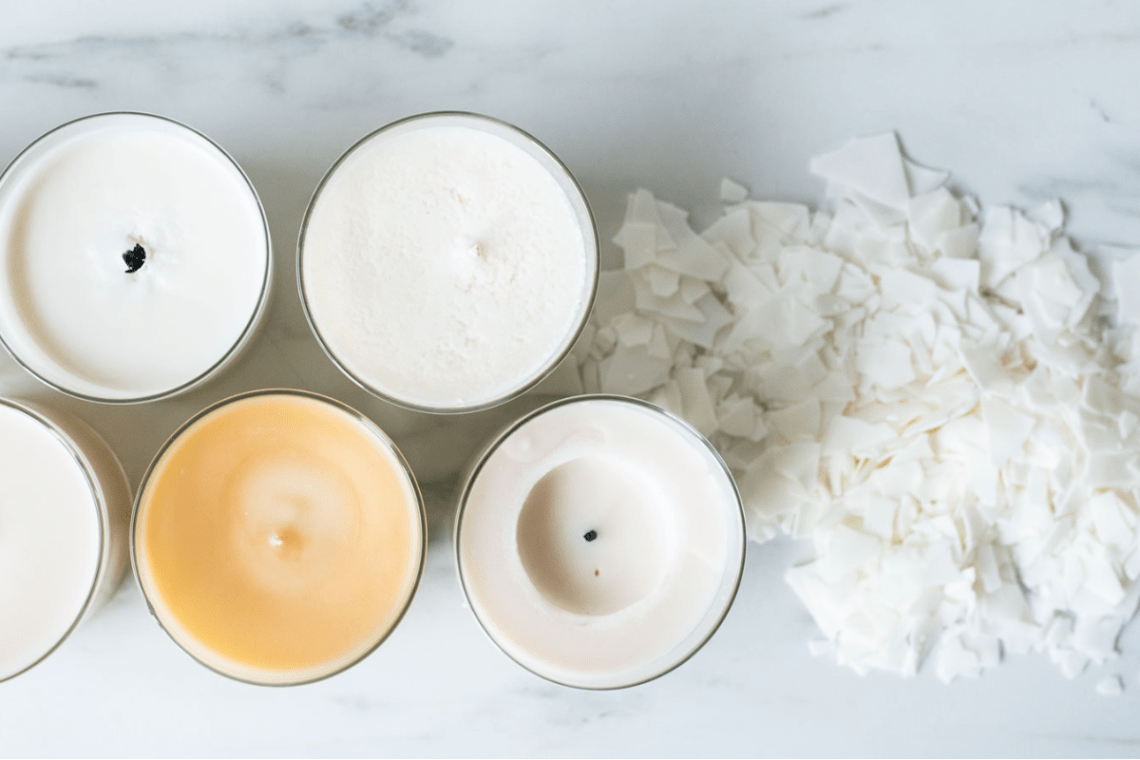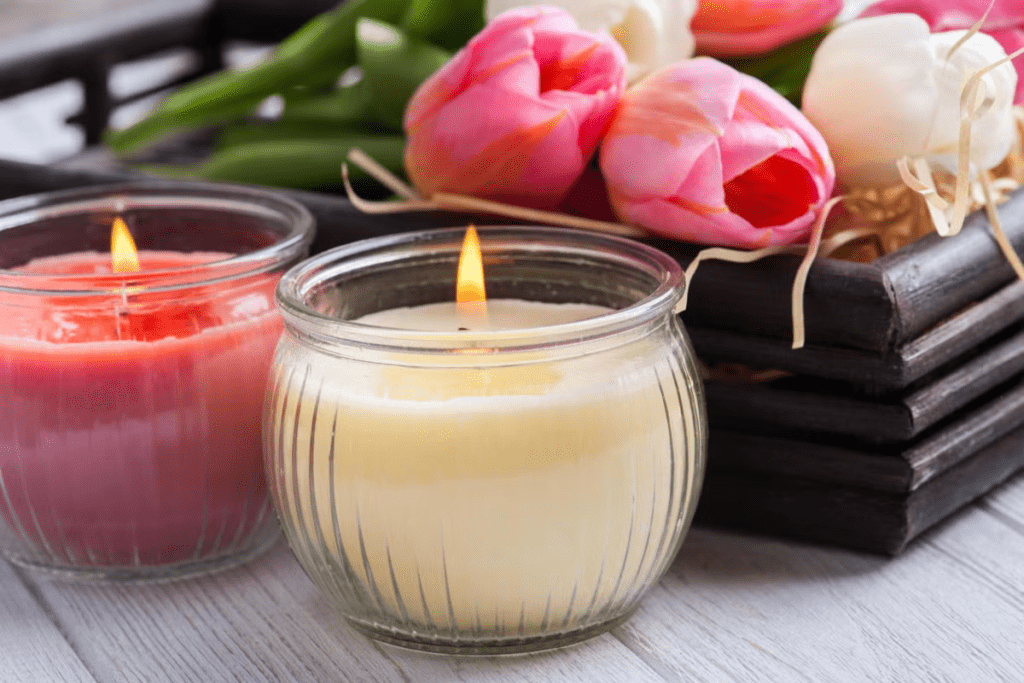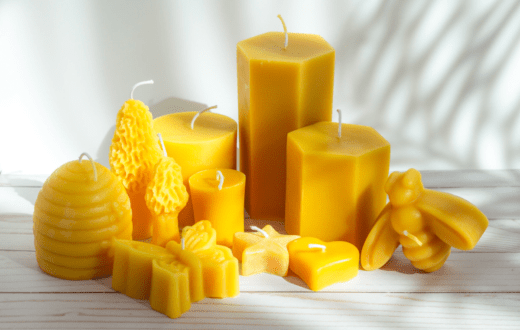
What you need to know about Soy Wax For Candle Making
Soy wax candles have gained immense popularity in recent years, becoming a go-to choice for candle enthusiasts seeking a clean-burning and eco-friendly alternative.
If you’re looking to get into candle making as a hobby or potentially as a business, it’s important to understand the types of wax options out there. Many people purchase wax in bulk, add a wick to a container, and pour, and think that is all there is to candle making. But it is more of a science than you think. There are scent throws, fragrances, and wick widths and burn rates that all need to be taken into consideration when selecting your candle wax.
In this comprehensive guide I put together, I’ll delve into the properties of soy wax, discuss the benefits it offers, address any potential drawbacks, and provide insights into how and when to use soy candles for optimal results.

Overview of Soy Wax
Soy wax is a vegetable-based wax derived from soybean oil. It is a natural and renewable resource, making it an eco-friendly alternative to petroleum-based waxes.
Benefits of Soy Wax
Clean Burning: Soy candles produce minimal soot and smoke, resulting in a cleaner burn compared to paraffin candles. This property reduces indoor air pollution and the accumulation of residue on walls and furniture. This aspect contributes to a healthier and more pleasant environment, especially for individuals with respiratory sensitivities or allergies.
Long Burn Time: Soy wax has a slower burn rate and melting point, meaning soy candles last longer, burn slower and more evenly, providing extended hours of enjoyment.
Excellent Fragrance Retention: Soy wax has a superior ability to hold fragrances, allowing soy candles to release scents effectively and consistently throughout their burn time. This characteristic enhances the ambiance and creates a more immersive experience.
Renewable and Sustainable: Soy wax is derived from a renewable resource—soybeans—which reduces the environmental impact associated with non-renewable petroleum-based waxes. Compared to petroleum-based waxes, soy wax reduces reliance on non-renewable fossil fuels and minimizes the carbon footprint associated with candle production.
Biodegradable and Easy Cleanup: Soy wax is biodegradable, making it a greener choice for those concerned about the environmental impact of candles. Additionally, soy wax spills are easily cleaned with warm water and soap, unlike paraffin wax spills that require more intensive cleaning methods.
Not quite sure which type of candle wax to use? Check out my comprehensive guide on the types of wax out there and which is best for your needs.

How and when to use Soy
Relaxation and Aromatherapy: Soy candles are ideal for creating a soothing atmosphere during self-care routines, meditation, or relaxation sessions. The slow, clean burn and pleasant scents enhance the overall experience.
Everyday Ambiance: Whether you’re enjoying a quiet evening at home or hosting a gathering, soy candles provide a warm, cozy ambiance for any occasion.
Eco-Conscious Living: If sustainability is a priority, soy candles are an excellent choice. Opt for soy wax candles made from non-GMO soybeans and environmentally friendly fragrance oils for a truly eco-friendly option.
Sensitivity Considerations: For individuals with sensitivities or allergies to synthetic fragrances or petroleum-based products, soy candles offer a natural, hypoallergenic alternative.
Potential Drawbacks of Soy Wax
Soft Consistency: Soy wax has a softer consistency compared to other waxes, which can make soy candles more prone to melting in warmer conditions. It is essential to store and handle soy candles carefully, especially during hot weather, to maintain their shape and prevent deformities.
Cost: Soy wax tends to be slightly more expensive than paraffin wax, primarily due to the higher cost of soybean oil as a raw material. While the benefits of soy wax often outweigh the price difference, it is worth considering the budgetary aspect when making purchasing decisions.
Limited Availability and Selection: Although the popularity of soy wax has grown significantly, it may not be as readily available as other types of candle wax. Additionally, the range of fragrances and designs in soy wax candles might be more limited compared to those made from paraffin wax.

Tips for Using Soy Wax
First Burn: When lighting a soy candle for the first time, allow it to burn until the wax pool reaches the edges of the container. This practice ensures an even burn and prevents tunneling.
Trimming the Wick: Keep the wick trimmed to approximately ¼ inch before each use to promote an optimal and controlled burn.
Candle Placement: Place soy candles on a heat-resistant surface away from drafts and flammable objects to ensure a safe and steady burn.
Extinguishing: Use a candle snuffer or gently blow out the flame to extinguish the candle. This practice minimizes the risk of splattering hot wax.
Soy wax offer a clean burn, sustainability, and excellent fragrance retention, making them a popular choice for eco-conscious consumers and those seeking a pleasant and versatile candle option. However, it’s important to consider the soft consistency and potential melting in warm conditions, the slightly higher price point, and the limited availability of soy wax candles. By weighing these factors, you can make an informed decision and with proper care and budgeting. Explore the world of soy candles, immerse yourself in their captivating scents, and enjoy the eco-friendly benefits they offer.
If you’re looking for a reputable company to buy quality candle wax, check out Nature’s Garden Candle Co.
If you are looking for some fun and creative candle making projects, check out some of my other posts. I love working with cement and glass containers and floral/succulent candle projects! They are surprisingly easy to do and make the perfect gift!



